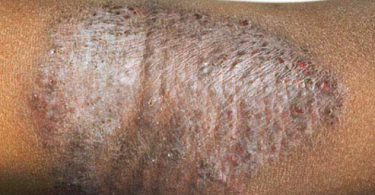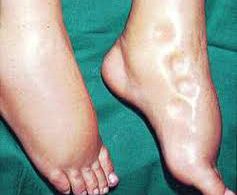There is a doctor-patient story of a melancholic patient and a wise old doctor, probably apocryphal , that goes like this:
Patient: I’m terribly sad and depressed and nothing can help me. I’ve tried everything and now I don’t know what to do.
Doctor: (cheerfully) I know what you can do to cheer yourself up. Go and see a wonderful new clown called Grimaldi.
Patient: (sadly) I am Grimaldi.
If the doctor had been a homeopath and had Grimaldi been born in the 19th century rather than the 18th, he might have been helped by Natrum carbonicum, often a useful remedy for depressed people who feel the need to put on a cheerful face.
I was fortunate to have a wonderful general practitioner look after me throughout my childhood. My mother, my two sisters and I had all been delivered by him. We loved him very much and called him Uncle Louis. He had a wonderful sense of humour. When he made a house call we would always offer him a cup of tea and say ‘White or black, Uncle Louis?’, to which he would answer ‘Purple!’ or on another occasion, ‘Black with milk please!’. And so it was that he brought humour into the house when we were sick and the family found that comforting and healing. I’m sure the love, humour and simple humanity of Uncle Louis was a major driving force in my decision to become a doctor. If I thought that medical school was going to teach me how to become a doctor and person like Uncle Louis, I was very much mistaken.
Learning to be a doctor, as every medical student knows, is no joke. You tend to meet some very serious people rather than comedians. It was much later in life that someone told me not to take life too seriously or I might end up with a serious dis-ease! When it came to my internship there were the usual jokes that young doctors tell each other in order to help them cope with the world of pain and death into which they have just been thrown. One moment in the wards, however, will forever remain etched in my memory. It was a morning ward round, the night after a very busy intake of patients. The chief registrar, a very opinionated and highly intelligent woman, came to the bed of a man with severe asthma. On his face was an oxygen mask and a very anxious expression. As the houseman gave us his clinical history, the worried man began to wheeze and struggle to breathe. The registrar did not take much notice of this and recommended medication. We moved forward to the next bed. When the group of doctors reached the end of the ward the registrar smiled and whispered to us: “Don’t all look at the same time, but just have a quick glance at Mr X, the asthmatic patient.” Of course we all looked together and were astonished to see Mr X happily chatting to a nurse, his wheezing completely gone. Unfortunately Mr X saw us. As soon as he noticed us looking at him, his wheezing returned with a vengeance and we could not help laughing. A funny moment in the ward certainly – but not for the patient! Yes doctors have used humour, often very ‘black’ humour, to help themselves survive in a world where they are surrounded by death, pain and suffering, but using humour creatively in the clinic and homeopathic consulting room is another story altogether.
I’ve always been interested in humour, laughter and comedy. I have friends who are professional comedians and in 1997 I appeared on stage in London, as Dr FishHead, in a review called “Are you feeling funny?”. The name Dr FishHead comes from a wonderful fish that can go right through my head. I use it to amuse my younger patients, but occasionally I wear it in the street to see how people react. Those that laugh, I consider psychologically healthy. Those that are somehow offended by a harmless piece of headgear, I consider to have some mental health issues. Although it’s not as valuable a diagnostic instrument as a stethoscope or MRI scanner, it has its uses!
Naturally I studied the health benefits of laughter, in particular the work of Dr. Bill Fry of Stanford University who spent several decades documenting the health benefits of laughter. Patch Adams, the clown doctor of Virginia about whom a very successful movie called Patch Adams, was made, was also an important influence. Eventually I devised Kaplan’s Mnemonic (SMILE) to help me remember some of the important health benefits of laughter.
S STRESS hormones reduced (adrenalin and noradrenalin, cortisol)
M MUSCULAR relaxation (muscles take 2 hours to return to previous state of tension after belly laugh)
I IMMUNITY increased, IgA, and IgM and IgG increased in blood after laughter, improved resistance to colds and infections
L LUNGS are helped by laughter expelling residual volume of air, allowing more fresh air to enter lungs
E EXERCISE – Dr. William Fry of Stanford Medical School has established that 100 laughs a day give you as much beneficial exercise as 10 minutes of rowing – and without the agonised expression that rowers, stationery cyclists and joggers customarily have on their faces.
ENDORPHINS & ENCEPHALONS – natural high making chemicals of the body, are increased by laughter
Recent research at the University of Maryland has shown that laughing regularly also offers some protection against heart attacks.
This mnemonic only shows the physical health benefits of laughter but the emotional and spiritual benefits are clearly self- evident. I was delighted and impressed to learn that there are over a 1000 laughter clubs in India, making India ahead of the rest of the medical world in this regard. Clearly laughter is an excellent holistic medicine as it’s good for body, mind and spirit.
In the mid 90s I attended a seminar in something called ‘Provocative Therapy’ and saw to my amazement that this was the cutting edge in the clinical application of reverse psychology and humour. So how do we use reverse psychology in the clinic?
In the 1970s a psychiatric social worker called Frank Farrelly was working with a very disturbed schizophrenic patient at Mendota State Institute, a psychiatric hospital in Wisconsin, USA. Farrelly had tried everything he knew in psychotherapy – but to no avail. His patient kept telling him that the situation was hopeless and that he would never ever be discharged from the hospital. This was the 92nd interview and the patient’s hopeless prognosis for himself had not changed. Farrelly tried a new approach:
Farrelly: Okay I agree with you. There is no solution to your problem. You will always be very disturbed and never get out of here.
Patient: (suddenly shocked) No, no, that cannot be the case…
Farrelly: (seeing something change in the patient) Oh, yes you have finally convinced me over all these consultations that nobody anywhere and no form of treatment is capable of solving your problem.
Patient: There has to be something!
Farrelly: (realising that he is really on to something) No, no you have refuted all my ideas and plans and there is nothing left. You will never get out of here.
Patient: (insistent on proving Farrelly wrong) Oh yes I will!
Result: In six weeks the patient was discharged from Mendota State Institute, never to return. Farrelly went on to develop Provocative Therapy which uses humour and reverse psychology to provoke patients to call forth (the translation from the Latin pro – vocare) the true solution from the patient himself. In 1973 Farrelly published Provocative Therapy in which he describes the principles and practice of Provocative Therapy.
When I first observed Farrelly, working with a patient, I observed two things:
- This was not merely laughter therapy; this was a sophisticated system of therapy that often resulted in the patient laughing. The object, however, was not merely to make the patient laugh but to get him or her to see the funny side of their problem – to get their inner joke. When they saw that they themselves were sabotaging their chances of fulfilment in life by their own aberrant behaviour, they could not easily continue that behaviour.
- In using reverse psychology, (eg. By encouraging smokers to smoke more and alcoholics never to quit) Farrelly was treating psychological problems with ‘like for like’. To my amazement I realised that I might just be observing ‘homeopathic psychotherapy’ in action. 13 years later I am convinced that Provocative Therapy is indeed as close to homeopathy as anything else I’ve seen in medicine.
And so I trained in Provocative Therapy and practised it alongside homeopathy. I was stunned by the positive results in so many areas including: anxiety, loneliness, not being able to find a partner in life, drug addiction and even anorexia nervosa – all conditions that are not easy to treat exclusively with homeopathy. Initially I kept the two disciplines separate but then something fascinating happened.
One day a pleasant lady consulted me for a session of Provocative Therapy. We spoke about a particularly difficult issue and she started to get a little flushed in the face which is fairly normal for some people. But then she did something a little less usual; she started to pull at her collar as if to try to loosen it. I noticed that every time I tried to provoke her therapeutically by pointing out something I found amusing about a problem, she went red in the face and started trying to loosen her collar. No homeopath in the world could fail to see that the picture of Lachesis was being demonstrated before his or her very eyes! Now what is important here is that her aversion to constriction of the neck was not told to me in answer to a direct question. Nor was it even volunteered spontaneously as unsolicited homoeopathic information. It was demonstrated or enacted before my very eyes – making it much more reliable as a symptom than anything she could have merely said to me. A few questions after the session confirmed the Lachesis drug picture.
Another patient was a lady who came to me for unexplained abdominal pain. She was a single woman who lived with a very dominating and demanding mother. Over and over she complained about her mother. I asked why she was the family member who was responsible for the mother and she told me that her father had moved to another town ‘for work reasons’ (I laughed) and that her brother lived in another country (I laughed even louder) – so they couldn’t help look after the mother. I listened to this very formally dressed woman describe her life and then our conversation went something like this:
Dr. Kaplan: I’m very impressed how kind you are to your mother. You must love her very much.
Patient: No! I don’t love her at all.
Dr. Kaplan: But you are so kind to her…
Patient: (interrupting) That does not mean that I love her. I do it because someone has to.
Dr. Kaplan: Oh, yes. I forgot that your father and brother left town – to get away from her – sorry, I meant to say that they left town for work reasons.
Patient: (suddenly realising something) Mmmmm…
Dr. Kaplan: Actually I’m very impressed with your kindness and altruism. You seem to have sacrificed your life to look after your mother because you love her so much.
Patient: I don’t love her.
Dr. Kaplan: But you must love her to be so kind to her.
Patient: No I do it because it’s my duty!
And there we have the centre of the case. An anxious, formally dressed patient with unexplained abdominal pain who has an extremely strong sense of duty in her life. A clear case of Kali carbonicum! Now would I have found this remedy if I’d sat down with her and taken an hour’s homeopathic history? Maybe I would have and maybe not. But the information that made me think of Kali carb. had been obtained in approximately ten minutes! The patient’s abdominal pain disappeared within 3 weeks and did not return.
I began to see something fascinating about the Provocative Therapy style of talking to patients. Patients were being therapeutically provoked to revealing (in contrast to talking about) essential features of their constitutional picture. And importantly this was happening very quickly – making this style of taking the case extremely time-effective and cost-effective.
In spite of these dramatic homeopathic conversations, I still continued to take most of my case histories in the normal homeopathic way. However I began slowly to see a way of incorporating the ‘provocative-style’ conversation into my homeopathic case taking. Obviously an innovative approach to taking the case is not necessary if the conventional method is working fine. However when a homeopath finds himself or herself struggling to elicit useful homeopathic information in the consulting room it may not always be the best idea to keep doing the same. If banging one’s head against a wall doesn’t make the wall give way, banging it harder and longer may not produce the desired result either. So in cases where I found that well-indicated remedies were not working I suggested to my patients that we try something different and explained the process of Provocative Therapy. It is absolutely essential that the patient understands the process and gives me permission to talk to them in this way. Frank Farrelly’s Golden Rule of Provocative Therapy is only do it if you have ‘affection in the heart and a twinkle in the eye’. This rule has served me very well as my patients know from my facial expression and body language that I really want them to do well. In other words the patient feels supported but his/her problem is torn apart by reverse psychology and humour.
I found this approach useful in the following situations that are challenging for all homeopaths:
- Difficult cases: that are just not responding to remedies
- Cases that need psychotherapy and homeopathy: I have had some very gratifying results with patients who have come for several sessions of therapy without expecting a remedy immediately. With the pressure off for a while, it’s astonishing how useful information is volunteered by the patient in a session of Provocative Therapy.
- Treating other homeopaths: In the West, homeopaths have been know to travel all over the world to see masters of homeopathy who hopefully will finally come up with a remedy that can help them. I think the problem is not that they are not seeing good homeopaths but they suffer from what I’ve termed a ‘loss of innocence’. They know why they are being asked questions and how their answers may be analysed and thus lose the innocence of the patient who simply answers the questions honestly.
- Treating psychotherapists: Psychotherapists are not easy homeopathic patients as they tend to analyse the question before answering and often answer in the lingo of therapy – sometimes referred to as ‘psychobabble’. This isn’t useful because if you give them all Sulphur for ‘theorizing’ you don’t get them all better! A ten-minute session of Provocative Therapy though, can really elicit useful information. No matter how they react to the absurd comments of the doctor, they will always reveal useful homeopathic information.
Surprisingly Provocative Therapy is not time consuming. Sessions can be as short as 5-10 minutes once you have got the knack of it – which is not that difficult to pick up with proper training. I certainly think it could be very popular in India, the number one country for homeopathy in the world and the place where Laughter Clubs really took off. It is my firm belief that the sophisticated use of reverse psychology in Provocative Therapy is essentially ‘homeopathic’ in its dynamic. I’ve seen drug addicts and smokers quit when told that they are ‘hopelessly addicted and can never stop’. I’ve seen fat people lose weight when encouraged to eat more. I’ve seen anorexic patients start eating normally when told that that they should eat less and become even thinner. In all these cases, the homeopathic side of my mind is wide awake, waiting for symptoms. Perhaps a lot of these patients got better because they got the right remedy in the end. It’s hard to tell but in the end, in both homeopathy and Provocative Therapy it is patients’ inherent ability to heal themselves that does the trick. Homeopathy and Provocative Therapy both use the law of similars to catalyse patient’s ability to heal themselves and I believe them to be synergistic. Studying Provocative Therapy has certainly helped me enjoy homeopathy and medicine more and enabled me to approach cases that would previously have made my heart sink, with optimism and enthusiasm.





